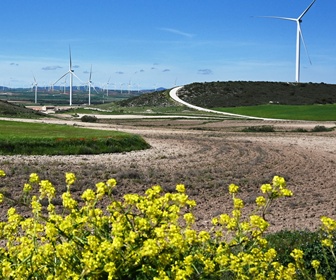Driving Forces for Worldwide Implementation of Wind Energy
 Wind energy is the most successful of contemporary energy solutions. However, new energy solutions depend on appropriate tariff schemes. They are even more crucial than research and mass production for the massive implementation of wind energy. Three countries with guaranteed prices, Germany, Spain and Denmark, represent over 75% of wind energy generation in Europe. When Denmark suspended its guaranteed price system in 2003, the market for new wind power instantly vanished. In contrast, Austria changed to guaranteed tariff schemes in 2003, and the highest European growth rate was immediately observed.
Wind energy is the most successful of contemporary energy solutions. However, new energy solutions depend on appropriate tariff schemes. They are even more crucial than research and mass production for the massive implementation of wind energy. Three countries with guaranteed prices, Germany, Spain and Denmark, represent over 75% of wind energy generation in Europe. When Denmark suspended its guaranteed price system in 2003, the market for new wind power instantly vanished. In contrast, Austria changed to guaranteed tariff schemes in 2003, and the highest European growth rate was immediately observed. By Preben Maegaard, President, World Wind Energy Association
There is sufficient data available to make a comparison between the various tariff models. This shows that no examples exist of nations with significant renewable energy shares of their supply of electricity based on quota principles and emission trading. Great Britain and Ireland represent a modest share of wind power in Europe. Although Germany has more than 15,000MW of wind energy generation compared to 600MW in Britain, it is not because of favourable wind resources. All countries of the world have access to the same advanced wind technology, with commercial wind turbines up to 4.5MW manufactured by national and multinational corporations.
Worldwide examples of successful wind energy development clearly reflect the political priority that the leading countries are giving to wind energy by creating favourable legal frameworks. In several countries, wind energy is already contributing substantially to the electricity supply, in some regions reaching shares of 50% and more. In Denmark, renewable energy in 2003 covered 20% of the demand for electricity, and by 2008 this will increase to at least 25%. Germany, the largest country in the European Union, is now getting almost 10% of its electricity from wind power.
Based on a member survey conducted in February 2004 by the World Wind Energy Association, 100,000MW of wind energy capacity is expected to be exceeded in the year 2008, compared with 40,000MW at the end of 2003. Further substantial growth can be expected in the next few years in the five currently leading countries, as well as in other European and Asian countries. In particular, emerging countries such as China, India and Brazil, with their high need for additional energy supply to cover their economic growth, are now focusing more and more on renewable energies. During the 3rd World Wind Energy Conference, 1–4 November 2004 in Beijing, special attention will be given to such aspects by the many ministers and scientists attending the conference.
The biggest barrier for renewable energies on the existing energy market is still the cost gap caused by enormous subsidies of US$ 300 billion per year for fossil and atomic energies and non-internalised external costs. Furthermore, it is much easier for large power companies to obtain low-interest, long-term credits than it is for local, small and medium sized operators. The world community is called on to create a level playing field and fair conditions for renewable energies.
To overcome the discrimination and restrictions described above it is necessary for politicians and wind energy supporters to develop, prioritise and execute renewable energy strategies to achieve fair market entry conditions for the renewable energies. National governments should have a careful look at the Kyoto framework, as this has several serious weaknesses that do not favour renewable energy and diverts the focus by emphasising short-term, least-cost solutions that are inefficient for the necessary long-term promotion of renewable energy.
To overcome the discrimination and restrictions described above it is necessary for politicians and wind energy supporters to develop, prioritise and execute renewable energy strategies to achieve fair market entry conditions for the renewable energies. National governments should have a careful look at the Kyoto framework, as this has several serious weaknesses that do not favour renewable energy and diverts the focus by emphasising short-term, least-cost solutions that are inefficient for the necessary long-term promotion of renewable energy.
There is also a need for a broader and better representation of renewable energies in the international and national arenas not least through an international agency for renewable energy. Such an agency could strengthen and coordinate existing activities and take responsibility for the worldwide proliferation of renewable energy, give the energy solutions of the future a ‘home’ and dedicate itself to the many activities now neglected by other international agencies.
Renewable energies offer the chance for a sufficient and secure energy supply. Thus they create the opportunity for peaceful development and greater global security. The amount of solar energy (biomass, wind, waves) reaching the Earth is equal to tens of thousands of times the present world energy consumption, so there are no natural limitations to its use for the benefit of humankind.
Wind energy use will be one cornerstone of the energy supply of the future. It will be part of a future integrated energy mix including solar energy, hydropower, biomass, geothermal energy.










